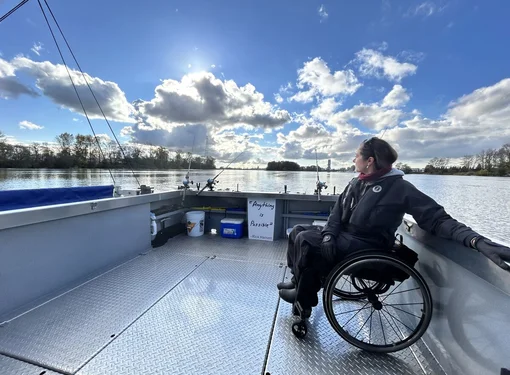Do accessibility laws work?
Above image: While this wheelchair ramp follows all accessibility laws, it is obviously not practical and is almost a hindrance more than a useful feature.
Laws governing accessibility has been written into law in many places. The most notable one is the United States' Americans with Disabilities Act (ADA). In Canada, the province of Ontario created the Accessibility for Ontarians with Disabilities Act (AODA). Similar or additional laws exist elsewhere in North America on the municipal, provincial, and state levels.
But do these laws actually lead to better accessibility?
Why do accessibility laws exist?
 Above image: A sign that both confirms a ramp's compliance to ADA laws and reminds others of who benefits from those laws. (Credit: Wikimedia Commons.)
Above image: A sign that both confirms a ramp's compliance to ADA laws and reminds others of who benefits from those laws. (Credit: Wikimedia Commons.)
In the past, accessibility was not seen as an important issue. There were many reasons for this. Health care was often not advanced enough to allow people with disabilities to thrive. Attitudes about human rights were also different, as evidenced by the struggles that women, immigrants, and racial minorities faced – one can guess what the disability rights movement looked like at the time (or whatever there was of one). The list goes on.
As attitudes changed and health care improved, the demand for improved accessibility increased.
However, with accessibility not seen as important for so long, it was a big step to suddenly change how everyone thought about built environments – in other words, people were used to building their communities a certain way, and this new "accessibility movement" changed all of that.
Despite this progress, letting this change happen naturally would take an unreasonable amount of time. As a result, laws were introduced to accelerate the process.
What do accessibility laws accomplish?
 Above image: Then-United States President George H.W. Bush signs the ADA on July 26, 1990.
Above image: Then-United States President George H.W. Bush signs the ADA on July 26, 1990.
Accessibility laws do many things. Firstly, they allow those without disabilities to have a sense of what is needed to become accessible, through concrete guidelines or requirements – it reduces the need for guesswork.
Secondly, they standardize accessibility to a predictable level so that people with accessibility needs can expect a certain level of access rather than being unpleasantly surprised.
Lastly, they attempt to enforce the notion that people with accessibility needs should have the right to access the same places as everyone else. This helps create more inclusive communities and lead to better lives.
Where do accessibility laws fall short?
One of the issues with accessibility laws is that while they enforce a standard level of accessibility, they create a situation where businesses do the "bare minimum" to comply.
This is problematic when those laws do not get updated as accessibility needs change. For example, the increased emphasis on independence has drastically changed the accessibility landscape over the years.
This also becomes an issue when building owners stop thinking about practicality and rely completely on guidelines, which may not reflect real-life accessibility needs. As noted in a previous blog post, there is a difference between "actual accessibility" and "theoretical accessibility."
How can we fix this?
There is no doubt that accessibility laws matter. They are a catalyst for change, but at the same time, completely relying on them for accessibility planning does not work when every location is unique and poses different challenges.
Therefore, accessibility laws and guidelines should be seen simply as a starting point, with additions made to each location according to its specific needs. There is no "one size fits all" – but that one size should be used to get ideas going.







